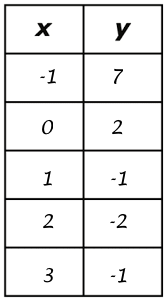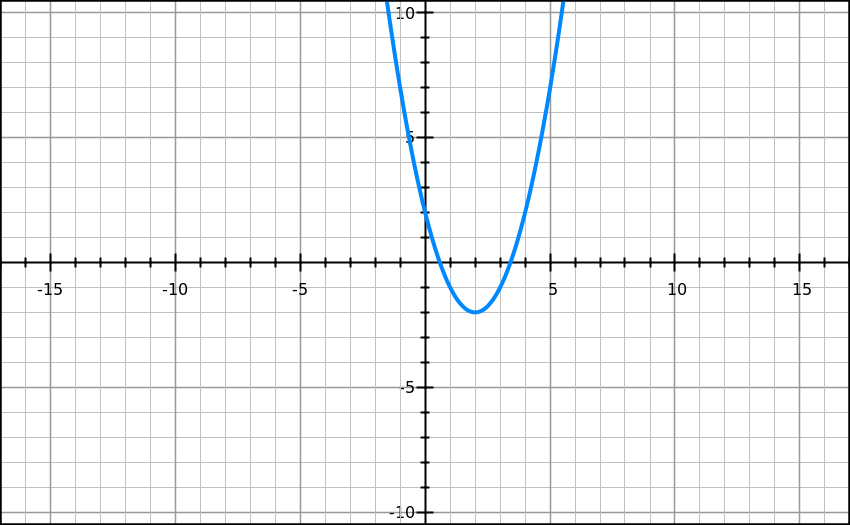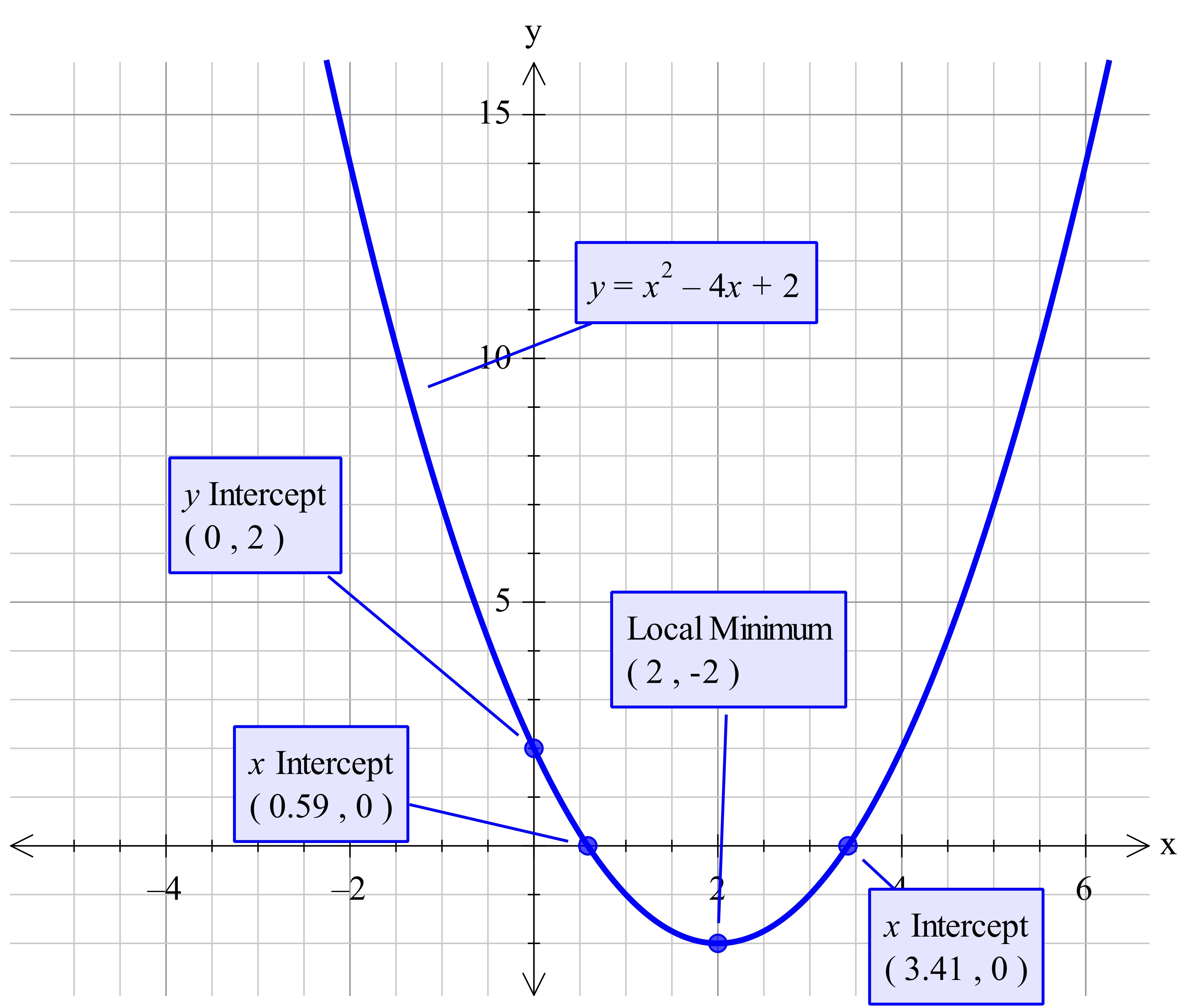How do you graph the parabola #g(x) = x^2 - 4x + 2# using vertex, intercepts and additional points?
2 Answers
While we're in standard form, let's find the y intercept. This is found by making
Hence, the y intercept is at
Now, let's convert to vertex form by completing the square.
In vertex form,
As for the x intercepts, we have to make
Hence, there will be x intercepts as
Finally, before graphing, you may find it helpful to prepare a table of values so that you can graph more accurately. It may look like the following.
Let's assume that you're working on the interval

You can obviously use a larger or a smaller table of values, it just depends on what interval of the function your teacher wants you to graph.
Here is the graph of the function:

Practice exercises:
a)
b)
c)
d)
e)
Hopefully this helps, and good luck!
Demonstrating a different approach to find the vertex
As the coefficient of
Explanation:
As it is not specified how you determine the vertex there is an alternative approach which part way to completing the square.
Consider the general case
Write this as
The
Then by substitution determine
'~~~~~~~~~~~~~~~~~~~~~~~~~~~~~~~~~~~~~~~~~~~~~~~
Given:
In this case
'~~~~~~~~~~~~~~~~~~~~~~~~~~~~~~~~~~~~~~~~~~~~~~~
Reading directly off the constant for
'~~~~~~~~~~~~~~~~~~~~~~~~~~~~~~~~~~~~~~~~~~~~~~~~~~~
There are three options
- Factorise - Not always easy to spot the values!
- Use the formula
- Completing the square.
AS the other solution uses completing the square I will use the formula method. Well worth committing to memory. I did this by making sure I wrote it out each time I practised a question. It has stayed with me for life!
general case
where
where



